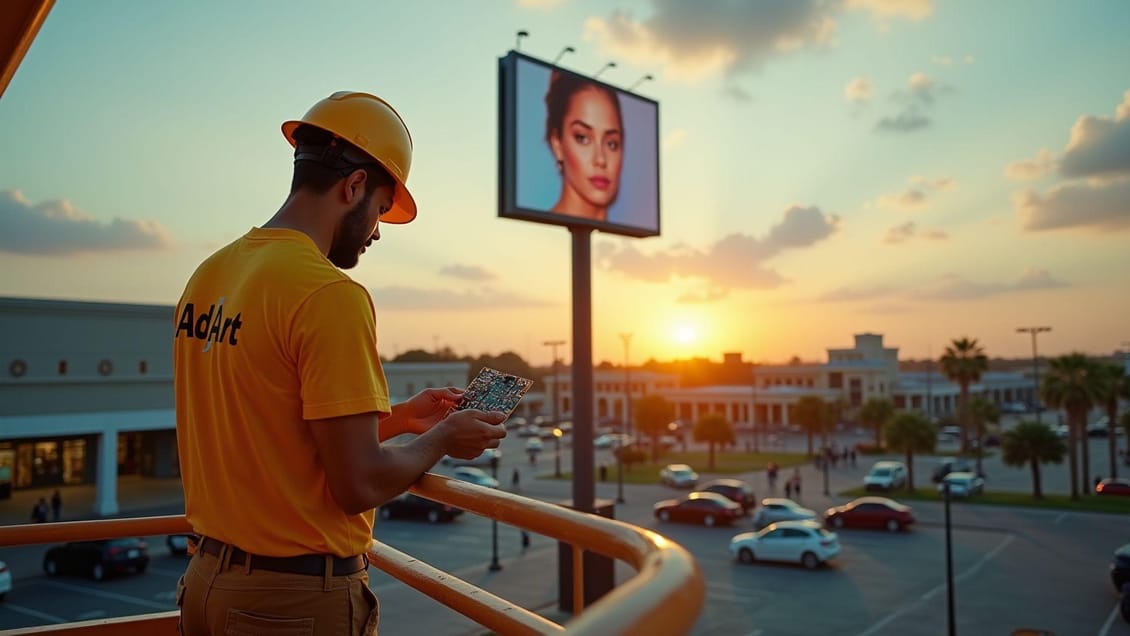While direct-view LED screens offer vibrant colors, high brightness, and exceptional durability, they can sometimes encounter issues that affect performance. Diagnosing and resolving these problems promptly is crucial to maintain display quality and prevent downtime. Here are some basic procedures to diagnose common problems with direct view LED screens.
Visual Inspection
- Physical Damage: Start with a thorough visual inspection of the screen. Look for any signs of physical damage such as cracks, dents, or dislodged modules. Physical damage can affect the screen's performance and may require professional repair or replacement.
- Loose Connections: Check for any loose or disconnected cables. Ensure all power and data cables are securely connected. Loose connections can cause intermittent display issues or complete failure.
- Dust and Debris: Inspect the screen for dust, dirt, or debris accumulation. Clean the surface and vents using appropriate cleaning tools to prevent overheating and ensure optimal performance.
Power Supply Check
- Verify Power Sources: Ensure the screen is receiving power from a reliable source. Check the power supply units (PSUs) for any indicators of failure, such as LED status lights. Replace any faulty PSUs.
- Measure Voltage: Use a multimeter to measure the voltage output from the power supply. Ensure it matches the specifications provided by the manufacturer. Incorrect voltage can lead to screen malfunction or damage.
Signal and Data Verification
- Check Signal Input: Ensure the video signal is being correctly input into the screen. Verify that the source device (e.g., media player, computer) is functioning properly and the correct input source is selected on the LED screen.
- Test with Alternate Source: Connect a different video source to the screen to determine if the issue lies with the original source or the screen itself. If the screen works with an alternate source, the problem may be with the original device or its connection.
- Inspect Data Cables: Check all data cables for signs of wear or damage. Replace any faulty cables. Ensure that data cables are correctly seated in their respective ports.
Module and Pixel Issues
- Identify Faulty Modules: Direct view LED screens are composed of individual modules. Identify any modules that are not functioning correctly. This can be done by visually inspecting for dark spots, color inconsistencies, or dead pixels.
- Swap Modules: If a faulty module is identified, swap it with a known working module from a different part of the screen. If the issue persists in the same location, the problem may be with the screen's infrastructure. If the issue moves with the module, then the module itself is faulty and needs replacement.
- Pixel Calibration: Perform a pixel calibration using the screen's control software. Calibration can resolve color inconsistencies and improve overall display quality.
Software Diagnostics
- Firmware Updates: Check for any available firmware updates for the screen. Updating the firmware can resolve software-related issues and improve performance.
- Error Logs: Access the screen's control software to review error logs. These logs can provide valuable information about the nature and source of the problem.
- Reset and Reconfigure: If all else fails, perform a factory reset on the screen and reconfigure the settings. This can resolve software glitches and restore the screen to its original state.
Environmental Factors
- Temperature and Humidity: Ensure the operating environment is within the specified temperature and humidity range for the screen. Extreme conditions can cause performance issues and damage the screen.
- Interference: Check for potential sources of electromagnetic interference (EMI) that could affect the screen's performance. Relocate or shield any devices causing interference.
Conclusion
Diagnosing problems with direct view LED screens involves a systematic approach, starting from basic visual inspections to more in-depth software diagnostics. By following these procedures, you can identify and resolve most issues, ensuring your screen remains vibrant and operational. Regular maintenance and prompt attention to any anomalies will help extend the lifespan and performance of your direct view LED screen.
